COP26: Surging wood pellet industry threatens climate, say experts
Nov 9, 2021
- With the U.N. climate summit (COP26) in its second week, Earth is on track to warm by 2.7° Celsius (4.86° Fahrenheit) by 2100, a catastrophic forecast based on projected carbon emissions. However, analysts say that those projections exclude major emissions currently escaping from biomass-burning power plants.
- A carbon accounting loophole in global climate change policy classifies burning woody biomass for energy as “carbon neutral,” and is accepted by the U.N. and many of the world’s nations. But scientists have proven otherwise, even as the forestry industry gets massive subsidies to produce millions of tons of wood pellets annually.
- Those subsidies are fueling rapid growth of the biomass industry, as forests are cut in the U.S., Canada, Eastern Europe, Russia, Vietnam, and Malaysia. The E.U. and U.K. are the largest biomass energy market, but with rapid expansion now occurring in Japan and South Korea, the biomass boom is just beginning.
- Scientists and activists say that to avoid disastrous global warming impacts, forest large biomass subsidies must end, which will make the industry unprofitable and free up funding for real climate solutions. But the topic is not even on the COP26 agenda, and action on the biomass burning issue anytime soon seems unlikely.
Representatives from 192 nations continue meeting in Glasgow, Scotland, at COP26 this week in hopes of making deals to save humanity, cool the planet, and salvage their nations’ reputations.
However, absent from the conference agenda are discussions of carbon accounting loopholes that scientists say are dangerously underreporting emissions and speeding climate change. An overlooked issue is forest biomass: burning wood to produce energy. Despite research proving otherwise, the practice continues to be called carbon neutral by nations and the forestry industry, allowing significant greenhouse gas emissions to go uncounted.
That has caused some policy and advocacy groups to dub forest biomass burning “the green myth.” Under the 1992 Kyoto Protocol, harvesting forests to make wood pellets, which are then burned in converted coal-fired power plants, was classified as a renewable energy source. Under Kyoto rules, which were grandfathered into the Paris Agreement, cutting and burning trees for electric power is considered a carbon neutral energy source — as long as companies replant trees.

But more than a decade of research has shown that wood pellets cause more carbon pollution than coal per unit of energy produced. And while it’s true that over the long term, regrowing trees may be able to sequester the same amount of carbon that is released producing and burning wood pellets, in the short-term, forest biomass is masquerading as a zero-emission energy source — allowing power plant smokestacks to pump out greenhouse gas emissions today and into the future, quickening the pace of global warming.
Unfortunately, the planet doesn’t have decades to recoup the carbon deficit created when forests are cut down and burned. United Nations chief Antonio Guterres recently classified the current climate crisis as “code red for humanity.”
“To stand a chance of limiting global warming to 1.5°C [2.7°F], we have eight years to almost halve greenhouse gas emissions,” said Inger Andersen, executive director of the U.N. Environment Programme. “Eight years to make the plans, put in place the policies, implement them and ultimately deliver the cuts.”
However, the forest biomass industry is gearing up for soaring growth, as the U.K., European Union (E.U.) and Asian nations rush to meet their net zero emissions targets by burning wood instead of coal. In the process, they receive carbon credits for switching to renewable energy without actually lowering their carbon footprint.
“Biomass needs to be kicked out of the renewables club,” says Rita Frost, campaigns director at the Dogwood Alliance, a North Carolina-based forest conservation nonprofit.

A booming business model, built on subsidies
The failure of national governments to address the biomass issue hasn’t gone unnoticed. In the runup to COP26, it prompted an International Day of Action on Big Biomass on October 21. The forestry industry staged pro-biomass events the day before with its National Bioenergy Day.
Back in February, more than 500 scientists signed a letter sent to President Joe Biden and other world leaders urging them not to substitute burning trees for fossil fuels as a climate change solution. “The burning of wood will increase warming for decades to centuries,” they wrote.
Money appears to be at the heart of the controversy: The biomass industry could not remain economically viable without major support from governments, say policy experts. Burning forests to make electricity is an expensive process. It’s only made profitable by renewable energy credits, billions of dollars in taxpayer subsidies, and high costs to customers, says Scot Quaranda, communications director at the Dogwood Alliance, a U.S. forest-protection NGO. “If companies were paying the full cost, there would be no profit in it.”
The industry’s exponential growth has been driven by lucrative renewable energy subsidies, especially in the United Kingdom and E.U. In 2020, Drax, a U.K.-based company which manufactures compressed wood pellets in the U.S. and Canada and burns more of them than any other power plant in the world, took in £832 million (US $1.1 billion) in U.K. government subsidies, plus an additional £258 million (US $348 million) in carbon tax breaks, according to Ember, a British climate think tank.
From 2012 through 2027, when support sunsets, Drax will have collected more than £10 billion (US$13.5 billion) in subsidies. That amounts to about two million pounds (US$2.7 million) a day, Quaranda, says. His colleague, Rita Frost, adds that “energy bill payers are also subsidizing this energy source. They’re being told that they’re trying, as a country, to combat climate change.”

Drax is now lobbying the government to extend subsidies past 2027, promising development of carbon capture storage technology. Quaranda calls the process “a mythical, made-up dream.” To date, carbon capture hasn’t been done at scale nor proven profitable anywhere on the planet.
It also appears that the financial industry is losing faith in the company’s carbon neutral claims. In October, the S&P Global Dow Jones dropped Drax from its index of the world’s greenest energy companies. However, the U.K. government, which is co-hosting COP26, showcased Drax last month as one of a dozen green companies chosen to take part in the government’s Global Investment Summit.
Subsidies prop up this industry everywhere it operates. E.U. member states, for example, paid out 10.3 billion Euros (US$13.9) in subsidies in 2018, according to ecosystem scientist Mary Booth, who directs the U.S.-based nonprofit Partnership for Policy Integrity. In Japan, subsidies totaled US$411 million in 2020.

The global wood pellet buyers
Fueled by “green” subsidies, biomass has morphed into a booming business and now produces about half of the world’s energy classified as “renewable.” Frost notes that “biomass was originally presented as a way to transition to a cleaner, greener energy future.”
A new, updated map of global wood pellet mills and biomass-burning power plants launched last month by the nonprofit Environmental Paper Network tracks rapid growth and a substantial planned industry expansion. The global market was valued at $51.2 billion last year. That is expected to reach $81.2 billion by 2028.
Europe adopted biomass energy in 2009, including the U.K., the Netherlands, Denmark, Germany, France, Italy, Austria, and Sweden. Within a decade, E.U. countries were burning about 75% of the world’s wood pellets and biomass comprised 60% of its renewable energy portfolio.
The world’s largest single wood pellet buyer is Drax, which was once among Europe’s largest coal power generators before retrofitting to burn biomass. This year, the firm, acquired Pinnacle Renewable Energy, a wood pellet producer in Canada, to enhance its wood supply.

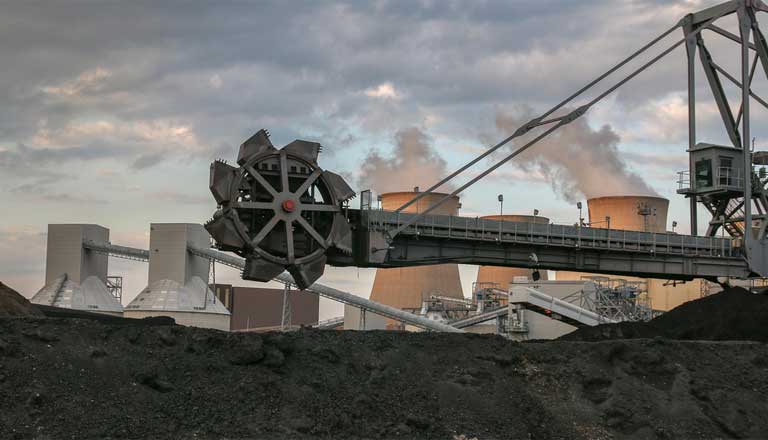
With Europe legitimizing biomass energy as carbon neutral, Asia is now a growth market, with Japan and South Korea leading the way. The earthquake and tsunami that wrecked Japan’s Fukushima Daiichi Nuclear Power Plant in 2011 sparked national fears over nuclear power. It precipitated a huge push towards biomass and Japan has since become the fastest growing industrial biomass market, with demand for wood pellets rising by 20% in 2020. It is forecasted to grow another 33% this year.
From 2012 to 2019, South Korea’s use of biomass-produced electricity grew sixty-fold, says Soojin Kim, a senior researcher at the Seoul-based NGO Solutions for Our Climate. Heavy government biomass subsidies have made it difficult for solar and wind energy to compete, prompting a lawsuit filed by more than 60 South Korean entities. They allege that renewable subsidies for biomass projects are unconstitutional, since power companies “co-fire,” burning coal along with wood pellets.
Co-fired biomass is also part of Indonesia’s decarbonization plan. India is ramping up its plans for biomass-produced energy too, and woody biomass is currently under consideration by some African nations.
The result of this soaring demand: Trees are being stripped from old growth forests, boreal forests and/or native hardwood forests in Canada, Eastern Europe, the U.S. Southeast and Russia; and cut in tropical forests in Vietnam and Malaysia, all to produce wood pellets.
Mary Booth emphasizes that “burning forest biomass is a triple hit to climate mitigation. It increases emissions, decreases the [planet’s] forest carbon sink, and soaks up subsidies that could instead be allocated to zero emissions technologies or efficiency.”
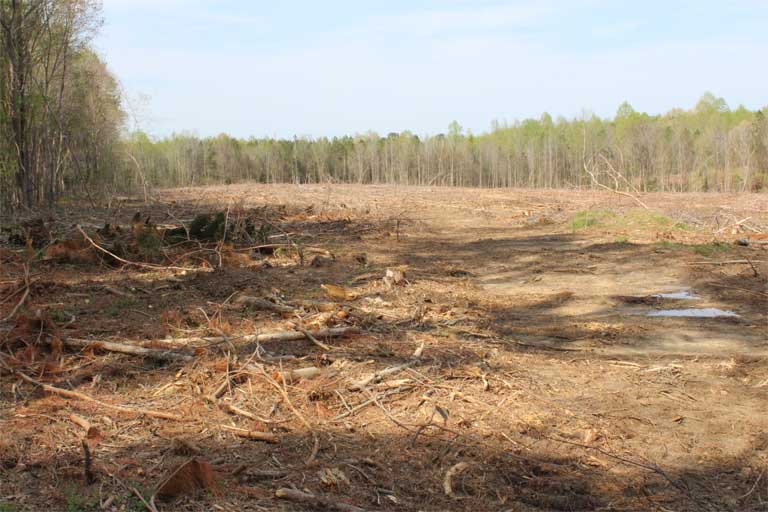
The global tree suppliers
The U.S. continues to be the largest exporter of wood pellets, shipping nearly 7.26 million metric tons overseas in 2020, worth $981 million. The U.K. was the top destination, followed by the Netherlands and Japan.
As of 2019, more than a million acres of forest in the U.S. Southeast had been leveled for foreign energy production. About 60,000 acres are clear cut in North Carolina alone each year for the pellet industry.
The Biden administration so far seems to be unwilling to stop the cutting. The just passed infrastructure bill, and yet to be voted on budget reconciliation bill (the Build Back Better Act), which include billions for legitimate climate programs, also “contain numerous logging provisions that would dramatically increase annual carbon emissions. Those provisions include logging for lumber, forest biomass energy, and wood pellets on public and private forestlands nationwide, which would undermine natural climate solutions and our forests’ carbon storage and sink capacities,” according to a November 2 open letter from 160 ecologists, biologists and climate scientists.

Canada, the world’s second-largest exporter, is planning to expand logging from British Columbia into Alberta province. Vietnam has also become a major producer, shipping mainly to Japan and South Korea. Vietnamese exports increased over 18 times from 2013 thru last year, with profits rising from $23 million to $351 million.
Russia’s boreal forests are also being lost to the energy market. With little transparency, it’s hard to estimate true numbers in Russia, says Almuth Ernsting, co-director of Biofuelwatch, a U.K.-based environmental advocacy group. But evidence from wood pellet import records into the E.U. show a 121% increase in 2019 over just a year before.
There also have been rumblings, Ernsting says, of increased logging in Belarus, from areas containing some of Europe’s last intact old growth forests. She has also heard reports of alleged logging in the Ukraine — in forests made radioactive by the Chernobyl nuclear disaster. “It’s incredibly worrying,” she says.
Drax, in addition to its U.S. and Canadian supply, sources trees from forestlands in Spain, Portugal, Poland, Sweden, Latvia, and Estonia. South Korea imports wood pellets from Vietnam, Russia, Malaysia, Indonesia, and Thailand.
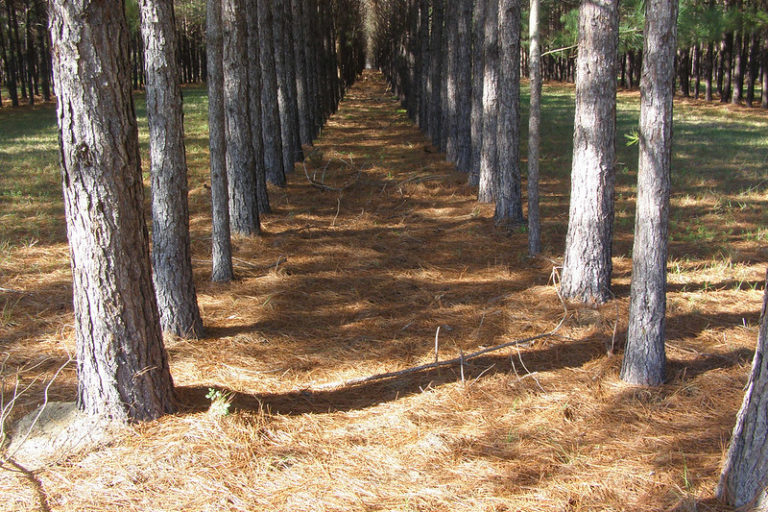
The biomass carbon footprint
With nowhere near enough sawdust and other logging “waste” to keep biomass power plants running, the forestry industry harvests whole trees, often logging mature forests. “Forests across the world are being destroyed to feed the global appetite for wood pellets.” Frost says.
Burning these trees for energy increases atmospheric carbon over the short term — coinciding with the crunch period between now and 2050 when the world most needs to slash catastrophic emissions. The UNFCC reported in October that current commitments to cut greenhouse gas emissions will fall seriously short of Paris Agreement goals, with the planet headed for a 16% increase by decade’s end.
It takes decades, if not centuries, for replanted trees to fully recapture the amount of carbon taken up during photosynthesis, according to a study by the Natural Resources Defense Council.
Climate change has already affected at least 85% of the world’s population. At this rate, Earth is predicted to warm by 2.7° Celsius (4.86° Fahrenheit) by the end of the century. That’s far above the 1.5-degree “safe” benchmark established in Paris in 2015 to avoid disastrous global impacts.
Emissions from the forest biomass industry’s logging-to-burning process are substantial, according to new research released last month. But under current U.N. and many national rules, it’s not necessary to count or report carbon emissions from harvesting and transporting trees to factories; processing them into wood pellets; and transporting those pellets thousands of miles, often by ship, across oceans to power plants — nor the greenhouse gas emissions pumped into the atmosphere from burning pellets.
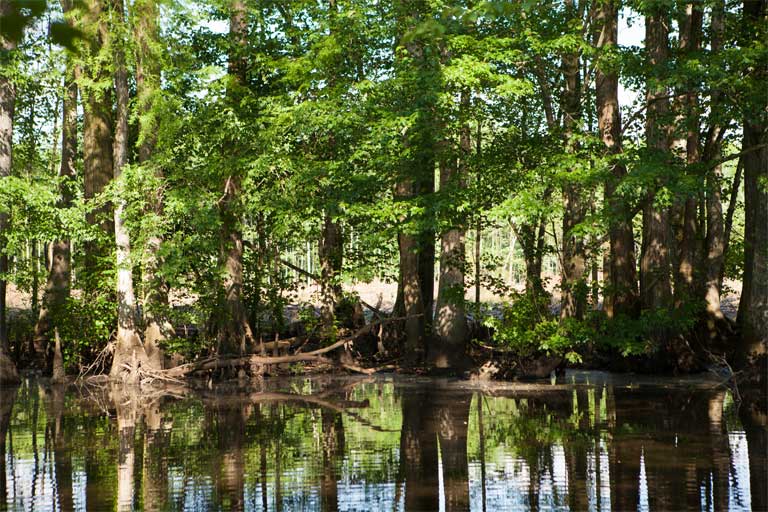
Impact on wildlife and ecosystems
Biomass production is further imperiling animal and plant species that are already disappearing at a dizzying rate as the human-caused Sixth Extinction event escalates. Clearcutting highly biodiverse forests to burn wood for energy places entire ecosystems at risk. Losing forests disrupts valuable ecosystem services, ranging from drinking water filtration for millions of people and providing a buffer against flooding, to pulling carbon dioxide from the atmosphere and acting as massive carbon storehouses. Biomass produced on vast tree farm plantations fails to store much carbon or match the biodiversity that exists in natural forests.
Logging rates in the U.S. Southeast, where most of the U.K.’s biomass imports now come from, are four times that of the Amazon. This region is a global biodiversity hotspot, among North America’s most valuable ecosystems. Its hardwood and wetland forests provide habitat for 77 animal species listed as threatened or endangered under the U.S. Endangered Species Act, including the red wolf, Louisiana black bear, and cerulean warbler.
The world’s largest wood pellet manufacturer, Enviva, has claimed that it only uses logging industry byproducts to make its pellets. But last summer, CNN reported that the company transported trees from a clear-cut 100-year-old wetland forest to a North Carolina mill that supplies Drax. Investigative reporting by the Wall Street Journal also documented clear cutting for wood pellets back in 2013. The nonprofit Dogwood Alliance has also tracked whole trees moving from clear cuts to Enviva wood pellet plants.
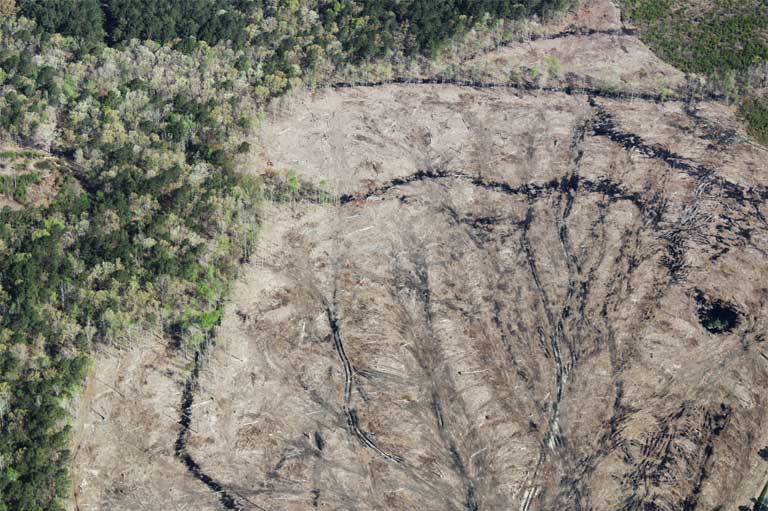
In British Columbia, seven wood pellet facility “haul zones” include primary forests that shelter threatened species, including caribou, according to a new analysis by Stand.earth, a U.S.-based nonprofit focusing on forest and climate issues. That’s an area the size of 1.4 million soccer fields, land that also offers nesting grounds during the summer to millions of birds, some 300 species. The government is increasingly allowing companies to log primary and old growth forests for wood pellets and timber, according to the report.
In Estonia, the state has authorized destruction of 100-year old forests in Natura 2000 reserves, a Europe-wide habitat network established to protect its most imperiled species. That prompted legal action by the E.U.
Poland was fined after logging Bialowieza Forest, one of Europe’s last virgin natural forests, for biofuel. Lithuania allows logging in Labanoras Park, another Natura 2000 reserve.

In addition to biodiversity losses, there are also air pollution concerns. Wood pellet factories release hazardous particulate matter and volatile organic compounds into the air, endangering public health. For that reason, the American Lung Association does not support biomass combustion to produce electricity.
In October, a policy brief in The Lancet medical journal reported that human-caused climate change is worsening human health in nearly every measurable way. And in an unprecedented action last September, more than 200 medical journals co-published an editorial calling climate change the greatest threat to global public health. The authors wrote that “The current strategy of encouraging markets to swap dirty for cleaner technologies is not enough,” and urged world leaders to guide a swift transition to a zero-emission economy. Activists argue that wood pellets shouldn’t be part of that solution.
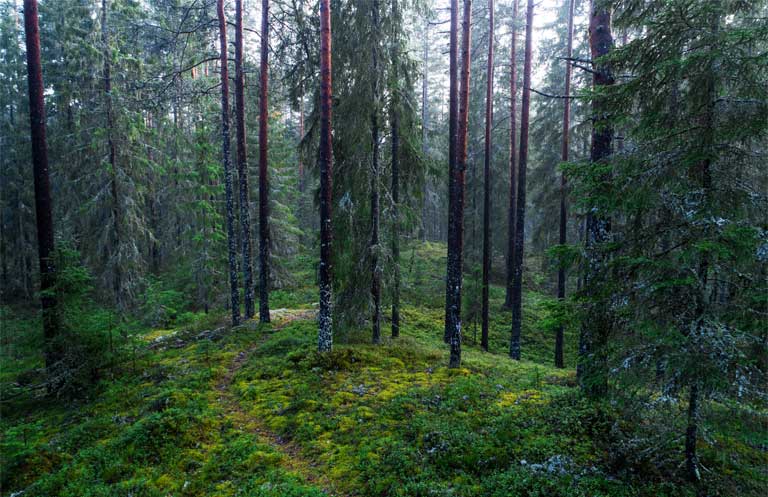

Killing ‘carbon neutral’ biomass subsidies
Last February’s letter from scientists to world leaders outlined a clear way forward. “To avoid these harms, governments must end subsidies and other incentives that today exist for the burning of wood, whether from their forests or others.” They added, “The European Union needs to stop treating the burning of biomass as carbon neutral in its renewable energy standards and in its emissions trading system.”
Cutting subsidies would pretty much kill the wood pellet industry, says Biofuelwatch’s Almuth Ernsting.
But forestry companies are fighting hard to stay in business and protect soaring profits. Corporate P.R. messaging from the wood pellet and timber industries tout wood pellets’ sustainability credentials and climate benefits. These lobbying efforts have been likened by some environmentalists to past campaigns by tobacco companies used to defend cigarettes, and oil companies to refute climate change.
However, the industry claims to have solid research on its side, and urged E.U. leaders last February to continue developing bioenergy policies “based on sound and relevant science.” In support of their view, they attached a 2014 study published in the Journal of Forestry that evaluated more than 135 peer-reviewed scientific articles exploring “forest bioenergy and carbon debts” and favoring the growing use of biomass.
The study’s key finding: “[L]ong-term carbon mitigation benefits are derived from sustainably managed forests that provide an ongoing output of wood and other biomass to produce long-lived products [like timber] and bioenergy [wood pellets], displacing GHG [greenhouse gas]-intensive alternatives [like coal].”

Ernsting worries that some academics are, “turning out study after study that are indistinguishable from [statements made by] industry spokespeople.” She adds that “The timber and logging industries have more experience in greenwashing than anyone else. They’ve been doing it since before fossil fuels started.”
Scot Quaranda was even more direct in his condemnation. “It’s a true example of the ‘Inconvenient Truth.’ The [carbon] accounting is bogus and the whole industry is built on lies,” he says. “We need to put political will into true renewables and real solutions.”
Mongabay reached out to the American Council on Renewable Energy, which has endorsed biomass; a spokesperson declined to comment. The U.S. Industrial Pellet Association did not respond to emailed questions.
Human actions can still mitigate against the worst impacts of climate change, according to analysts. But change must be driven by drastic policy shifts in many countries, especially major carbon emitters, Booth says, which includes China (28%), the U.S. (15%), India (7%), and the Russian Federation (5%) and carbon accounting loopholes must be closed.
Barring some magical intervention to sequester carbon, “you have to reduce your emissions and increase your sinks,” Booth concludes. “Protecting, restoring and expanding forests is the name of the game.”
What seems certain is that biomass solutions aren’t going to be addressed at COP26. Meanwhile, as U.N. Environment Programme head Inger Andersen recently warned, “The clock is ticking loudly.”
Banner image: Handfuls of wood pellets and green sleeves illustrate the widespread, industry supported, belief that burning wood is a carbon neutral bioenergy source. But studies over the last decade have found that wood pellets produce more CO2 per kilowatt hour than coal. However, because of U.N. emission counting loopholes and national regulations (which allow large subsidies to the biomass industry), these wood pellets will be counted as carbon neutral when burned. Photo credit: #ODF on Visual hunt / CC BY.
FEEDBACK: Use this form to send a message to the author of this post. If you want to post a public comment, you can do that at the bottom of the page.